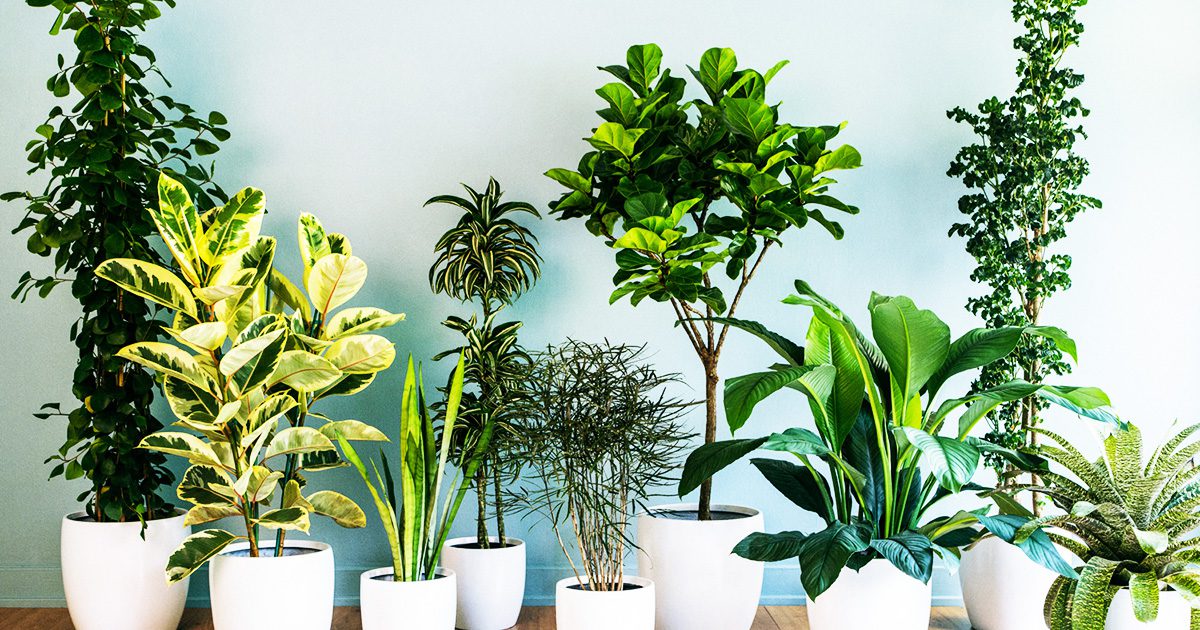While experts have long preached about the many benefits of houseplants, scientists are now saying that a little bedside greenery can even boost your sleep and health.

In fact, the presence of plants reduces stress, anxiety and helps with the removal of airborne pollutants.
The Joy of Plants studied archived research by NASA and the American College to determine which houseplants bring the most health benefits to the bedroom. Here’s what they found:
Aloe Vera: Easy to keep and aesthetically pleasing in any home, the aloe vera plant has been named as one of the best plants for air purification by NASA.
Why? It releases oxygen continuously throughout the night, making it an ideal bedroom addition. It also fights benzene (which is found in detergents and plastics) and formaldehyde (in varnishes and floor finishes) so helps keep the air super pure.
English Ivy: More commonly associated with Christmas, the ivy that grows up your house is actually perfect for your bedroom.
Researchers at the American College of Allergy, Asthma & Immunology found that English ivy, in particular, removes 78% of airborne mold in just 12 hours.
Areca Palm: Madagascan areca palm leads the way in efficiency at ‘mopping up’ pollutants.
Researchers say that the palm is brilliant for anyone prone to colds and sinus problems because it releases moisture into the air. This, in turn, makes it much easier to breathe helping you nod off quicker.
Dwarf date palm: This plant is hardy, drought-tolerant and long-lived and it’s brilliant at removing indoor air pollutants – especially xylene.
Boston Fern: This attractive plant has graced indoor landscapes since Victorian times – and for good reason. The plant ranks ninth on NASA’s list of 50 air-purifying plants – particularly adept at removing formaldehyde.
Chinese evergreen: This has been dubbed the easiest houseplant because it grows well in low light and areas of the home where other plants won’t grow (like a dark bedroom). The best part about it is that it removes more toxins as time and exposure continues.
Peace lily: This beautiful plant can cleanse the air and improve it by 60%. It also absorbs mold spores through its leaves and circulates them its roots to use as food.
Weeping fig: This houseplant is the best at beating pollutants that are emitted from carpeting and furniture such as formaldehyde, benzene, and trichloroethylene.
Spider plant: This houseplant grows super quickly and can remove up to 90% of the toxins from the air in your bedroom in just two days. It’s especially great for people with dust allergies.
Lady palm: This houseplant is one of the most effective plants at cleansing the air of formaldehyde, ammonia, xylene, and toluene.
CITY DWELLERS
City dwellers today spend approximately 90% of their time indoors, but experts from the Royal Horticultural Society say that ‘bringing the outdoors inside’ can recreate some of the natural benefits lost in the process.
BENEFITS IN THE WORKPLACE
A review of the scientific evidence suggests that workers are more productive when their office is filled with greenery – and hospital patients are even thought to tolerate pain better if there is a plant on the ward.
Perhaps most importantly, plants also trap and filter pollutants that are linked to thousands of deaths a year.
If you found this article helpful, please share with friends and family by clicking the button below!




